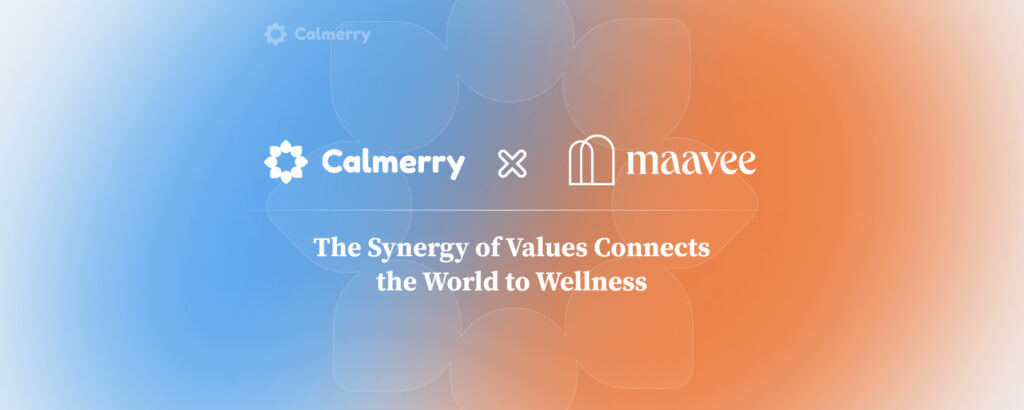of our clients are satisfied with the initial counselor-matching process
The next chapter in business mental wellness
Entrust your employee well-being to Calmerry's nationwide network of licensed mental health professionals.
Recognized by leading healthcare media

With
of employees prioritizing mental health support in future job searches, investing in your team’s well-being is more crucial than ever.
A remarkable
find such support effective
And
deem it highly effective.*
From anxiety to burnout, stress to deeper challenges, our 1000+ expert therapists are here for your team.
No hurdle is too high.
A comprehensive solution for the modern teams
Whether through messaging or live video, our licensed professionals are there when your team needs them.
Boost mental health awareness with mood trackers, journaling tools, and enlightening content.
We match each employee with a therapist specialized in their unique challenges, crafting a personalized roadmap to well-being.
Monitor how your team engages with the platform and see progress and improvements in real time.
Choose from a range of pricing options designed to align seamlessly with your company’s unique needs.
Unlock the team's true potential through coaching
Why just address well-being when you can unleash potential? Through our professional coaching, your team can tap into its hidden strength with newfound confidence
Target gaps and harness
innate team strengths for
optimum results.
Make informed choices and inspire innovative thinking.
Equip your team to tackle tomorrow’s challenges with confidence.
admit feeling positive changes after 2 weeks of therapy

Empowering diversity
in the workplace
At Calmerry, we’re proud to partner with a rich tapestry of therapists from varied ethnicities, and cultures to deliver care that resonates with every client’s lived experience.
I am thankful that Calmerry has allowed me to support and care for my team. Work and life in general can be difficult and I feel,
as an employer, I need to help my team process their emotions.
My team knows that I care about them.
Contact us
Book a call
Meet our partners






Stay tuned with our latest news

Find mental health insights on our blog
How to Support Your Depressed Manager as a Leader
The Sense of Belonging in the Workplace: Why It Matters So Much
Read more in Blog
Frequently asked questions
Mental health in the workplace goes beyond the absence of mental health conditions; it also involves positive aspects, such as a sense of purpose, feeling valued, and managing life’s ups and downs.
It’s closely linked to job satisfaction, productivity, engagement, and positive work culture in an organizational context. Workplace mental health involves creating an environment that supports and promotes mental well-being and resilience while providing necessary support for employees experiencing mental health issues.
The workplace can be crucial in shaping an individual’s mental health. A positive work environment that encourages collaboration, inclusivity, recognition, and support can significantly enhance employees’ mental well-being, facilitating better job performance and satisfaction.
On the other hand, a toxic workplace characterized by high-stress levels, unhealthy competition, poor communication, and lack of support can lead to mental health issues like anxiety, depression, and burnout.
Factors such as long working hours, high job demands, lack of control over tasks, job insecurity, and workplace bullying can all contribute to employees deteriorating mental health.
Mental well-being issues in the workplace span a wide range, from everyday stress to diagnosed mental health conditions.
Common issues include stress, anxiety, and depression.
More severe conditions like burnout can also occur, often resulting from chronic untreated stress. Other issues could include substance use disorders, which a stressful workplace might exacerbate. These mental health issues not only affect employees’ personal lives but also have significant implications for productivity, morale, and overall organizational performance.
Stress and related disorders, including anxiety and depression, are among the most common mental health conditions in the workplace. Chronic stress can significantly impair an employee’s ability to function effectively at work and home.
It can lead to physical problems like hypertension and heart disease and mental health problems like anxiety and depression. Burnout is also common, particularly in high-stress professions or environments with excessive workloads and insufficient support or recovery time.
Measuring employee well-being can be a complex task involving subjective experiences and perceptions. Various methods can be used, including anonymous employee surveys, asking questions about job satisfaction, stress levels, and feelings of support.
You can also consider methods such as analyzing data on absenteeism, turnover rates, productivity metrics, and health insurance claims.
Regular check-ins or one-on-ones between managers and employees can provide opportunities for open discussions about well-being. It’s critical to ensure that employees feel safe and comfortable discussing their well-being and that you use the collected data responsibly.
It’s a multitude of factors, including:
- job security
- workload
- work-life balance
- opportunities for professional growth
- recognition and lack of it
- supportive work culture
- autonomy
- a sense of purpose
- ability to utilize one’s skills and strengths
We should also consider personal factors like resilience, coping skills, and lifestyle habits. While you cannot directly influence those as an employee, they, too, impact the overall employee’s well-being.
The benefits of promoting employee well-being are numerous and extend to the individual employee and the organization. For the employee, better mental health can lead to increased job satisfaction, improved work-life balance, and enhanced overall life satisfaction.
A healthier workforce can lead to improved productivity, reduced absenteeism, and lower healthcare costs for the organization. It also promotes a positive work culture, aids in employee retention, and can enhance the organization’s reputation as a desirable workplace.
There are multiple steps employers can take to improve employees’ mental health. Some of the suggested steps include
- fostering a positive work environment free of toxicity
- offering flexible working hours
- promoting work-life balance by reducing overtime and off-the-clock inquiries
- providing resources and services to support mental health
Employers can also prioritize mental health by offering training to managers, promoting mental health awareness, and implementing mental health policies.
Creating a culture that encourages open dialogue about mental health without fear of stigma or retribution can be crucial for promoting mental health in the workplace.
Employee burnout is a state of physical, emotional, and mental exhaustion. We usually characterize it by chronic fatigue, cynicism or detachment from work, and reduced productivity.
Burnout is caused by prolonged exposure to high-stress scenarios, excessive workload, lack of support or recognition from managers, and a lack of control over how one’s work is conducted (i.e., micromanagement).
It often results from prolonged exposure to high-stress situations, excessive workloads, lack of support or recognition, and limited control over one’s work. Burnout can lead to significant productivity declines and affect personal relationships and overall quality of life.
If an employee is experiencing burnout, it’s important to address it immediately. The first step should be acknowledging the issue and initiating open, supportive discussions about the employee’s experience.
Employers should encourage their teams to seek professional help, if necessary, and provide access to relevant resources. In the best-case scenario, the organization should provide means to access this professional help by contracting an online therapy platform for such needs or establishing an in-house Employee Assistance Program.
However, it’s also important to note that professional mental health cannot remedy all employees’ issues, as some of those issues can stem from improper management.
It’s thus essential to review and adjust the employee’s workload, provide flexible work arrangements, and create a more balanced work environment. On an organizational level, evaluating and changing the existing work culture or policies that contribute to burnout may be necessary.
Suppose an organization and managers didn’t have a proper framework to track these issues and know how to rectify them. In that case, extending coaching and counseling services to managers and employees may be advisable. By going through training and coaching to recognize symptoms of burnout and other types of job dissatisfaction, managers will be better-equipped to fight against those problems.
For more information, please visit our FAQ





